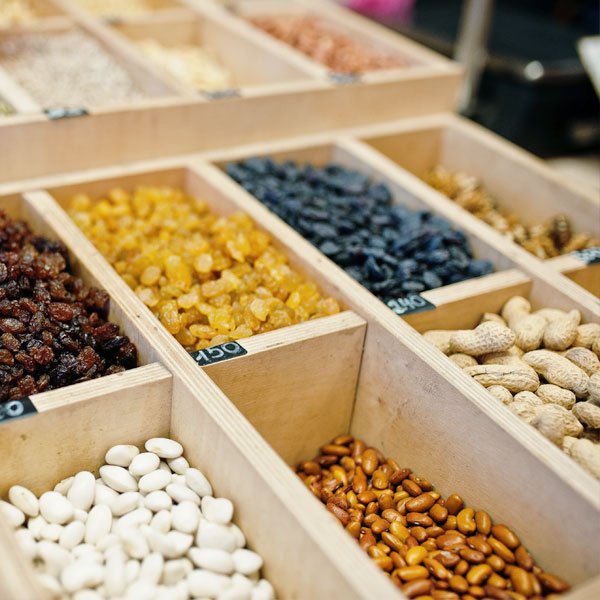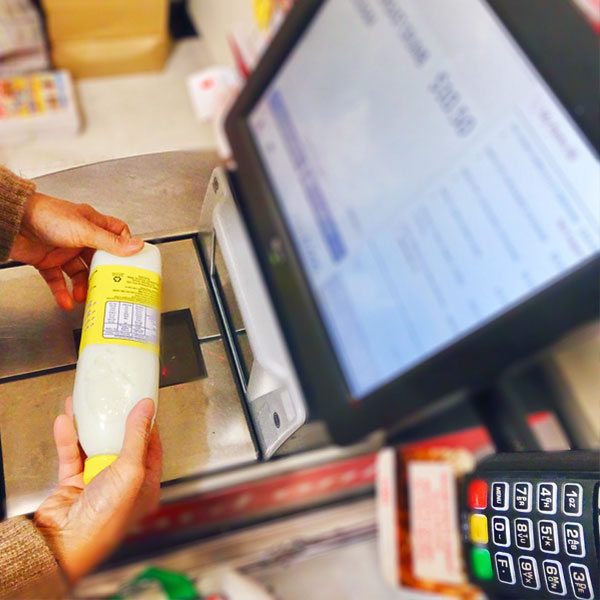The final moments of a customer’s visit can have a significant impact on the overall experience. Learn how to optimize your retail checkout for profitability and customer satisfaction.
If you work in retail, you’ve most likely heard of the odd phenomenon known as “the phantom line.”
Brick and mortar retailers have struggled with this frustrating problem for years. It’s the dilemma retailers face when checkout lines are just long enough to annoy people, without being so long that the manager is forced to open an additional checkout.
Of course, the time spent waiting in the checkout line is idle time for shoppers. Time spent texting or looking at their social media feeds.
But this idle time, and more importantly the checkout process itself can transform your customers’ experience and your store’s profits. After all, as a brick-and-mortar retailer, you have far more control over your customers’ experience than an online retailer does. The layout of your store, the atmosphere, and your staff all influence their buying decisions. While it often looks like the customer is in control of what they buy, in truth, you have massive sway over their buying behaviours.

Why you need to get the retail checkout process right
After all,
- Your customers have come into your store
- They’ve taken the time to find the products or goods they want
- They’ve walked up to the checkout
- And they’ve already decided to spend money with you
So creating a checkout process that increases impulse buys not only boosts profits, it also cuts the perceived wait times (because you’re engaging your customers as they wait).
Signs that you need to improve your checkout process
If you see any of these signs, it’s time to take a look at your checkout process:
- Customers are dropping merchandise and leaving once they see the length of the line
- Customers are complaining
- Customers are answering the “find everything you need?” question with a vague response
- Sales are in decline
- Average cart size is decreasing

Impulse purchases return higher store profits
Impulse purchases make up a good portion of a brick-and-mortar retailer’s profits.
Just look at these numbers:
- Karney reports that 40% of customers spend more money than they planned shopping in a brick-and-mortar store, compared to only 25% of online shoppers
- A survey suggests that 79% of respondents made the majority of their impulse purchases in-store, compared to only 6% making spontaneous purchases on a smartphone
- Google reports that 61% of shoppers would rather shop with brands that have physical locations over online only. And yet, 70% of surveyed consumers reported that the checkout experience is by far their biggest pain point.
Seeing is buying: the science behind impulse purchases
Donald R. Lichtenstein, a professor of marketing and associate dean at the University of Colorado Leeds School of Business, once said that getting customers to see your product is “the first and most important step in impulse buying.”
And that’s because the vast majority of our customer’s shopping habits live in the unconscious mind. Psychology Today reports that the spontaneous urge to spend money is actually ingrained in our DNA. And it comes down to a few simple but powerful drivers:
- Loss aversion (today we call it FOMO) is a real thing, and everyone loves a deal – especially if it makes us feel special
- We regularly delude ourselves – rather than look back at our past purchases and decisions, we look forward with an idealized idea of what it might be like to “just have that thing”
- Thinking through every decision takes a lot of work – so evaluating every purchase decision takes too much energy
How to hit the right psychological triggers to increase impulse purchases
If seeing is buying, then you need to make your checkout impulse buys more noticeable.
- Create a sense of urgency – trigger a sense of urgency through limited-time promos (“Today Only”) to make the impulse buy more compelling
- Make people feel like there’s a ton of value – make sure customers understand that they’re getting a good deal (“Buy two, get two”) with a generous offer
- Create excitement or novelty – test your newest or most novel merchandise, rotate out different goods, or combine different groupings into collections to see how your customers react

4 steps to maximize your profits during the checkout process
- Choose the right goods
- Keep things simple – at this point in the shopping process, customers are likely mentally fatigued from working through the store. Be sure to keep the products, the messaging, and a customer’s ability to add it to the cart simple
- Keep things cost-effective – appealing, relatively inexpensive, and tied to a sense of urgency is the sweet spot for checkout impulse buys
- Group items by theme – trial-sizes, life events, different activities, or seasonal promotions are all great ways to group merchandise
- Focus on high-margin goods – as the goal is to increase revenue and profits, focus on higher-margin merchandise
- Remind customers that they need it – everyday items are great impulse buys because it’s often when a customer sees it that they remember they need it
- Maximize your wall space and make impulse buys visible
- Layout your checkout counters and ques to give you the most wall space possible (for tips on this read our post on 12 ways to keep customers happy while they wait)
- Design custom checkout displays and shelving tailored to your floorplan, merchandise, and brand
- Keep eyelines clear and use built-in shelf lighting to highlight key products
- Train your team to upsell through the art of suggestive selling
- Not all impulse buys sit passively on a shelf or display; having your team recommend or suggest a product at checkout can direct your customers’ attention to the item or promotion
- This can also lead to impulse buys of non-tangible goods like warranties or moderate or higher-ticket items
- When your staff is trained at developing a rapport with the customer, they’ll be in a better position to recommend unplanned buys
- Turn signage, graphics, and digital displays into social proof
- First, you want to use signs, graphics, and digital displays to direct the customers attention
- Second, take the sales messages a step further by incorporating social proof (social proof is heavily leveraged by online retailers to bring in impulse buys)
- Messages can include “people also bought”, “staff picks”, “most popular”, “highest rated”, or “most wished for”

What about your checkout counters?
Having delivered for over 10,000 locations and 200 million+ sq ft of retail space, we’re all about retail fixtures, retail displays, and building the most effective retail environments possible.
More than a shelf. More than a display. Designing a next-level retail environment that connects your brand to your goods to your customers is as much a process as it is an art form.
If you need to update your checkout, give our retail fixture manufacturing team a call and we’ll help you design and build a checkout process that maximizes profits.

